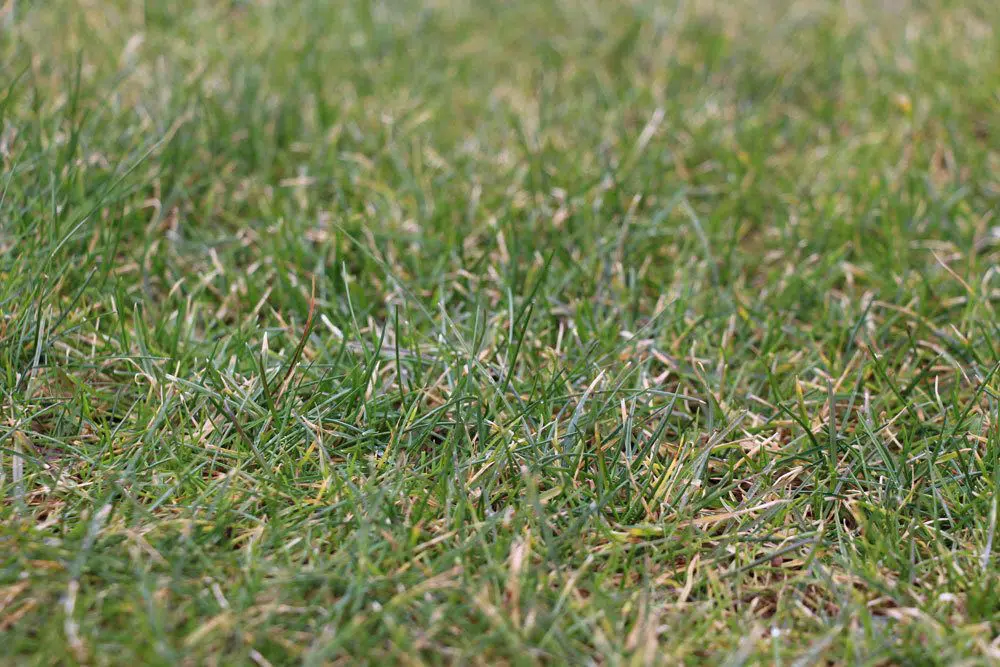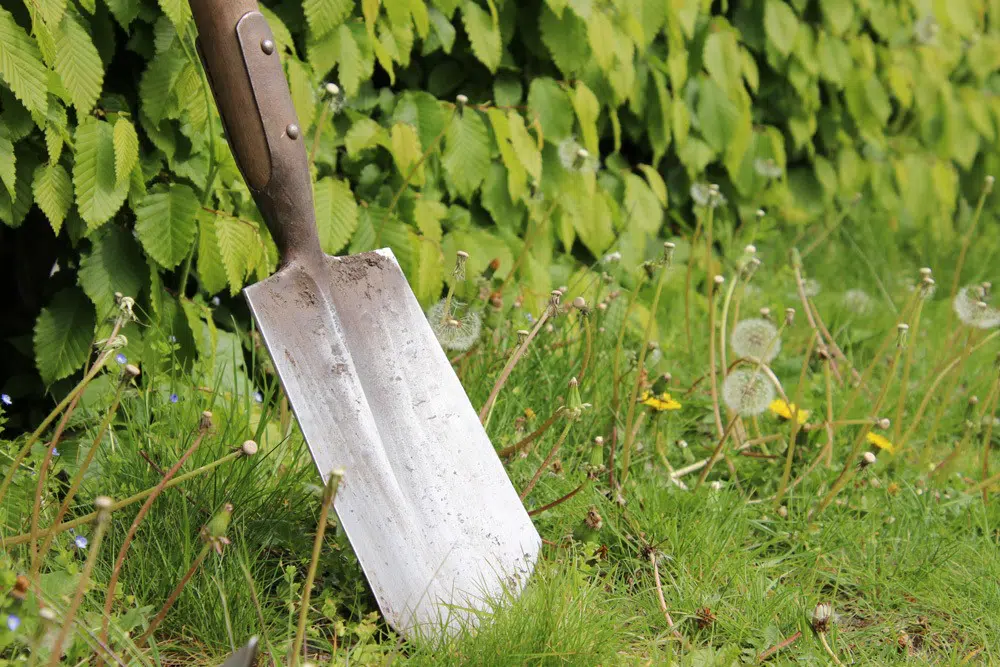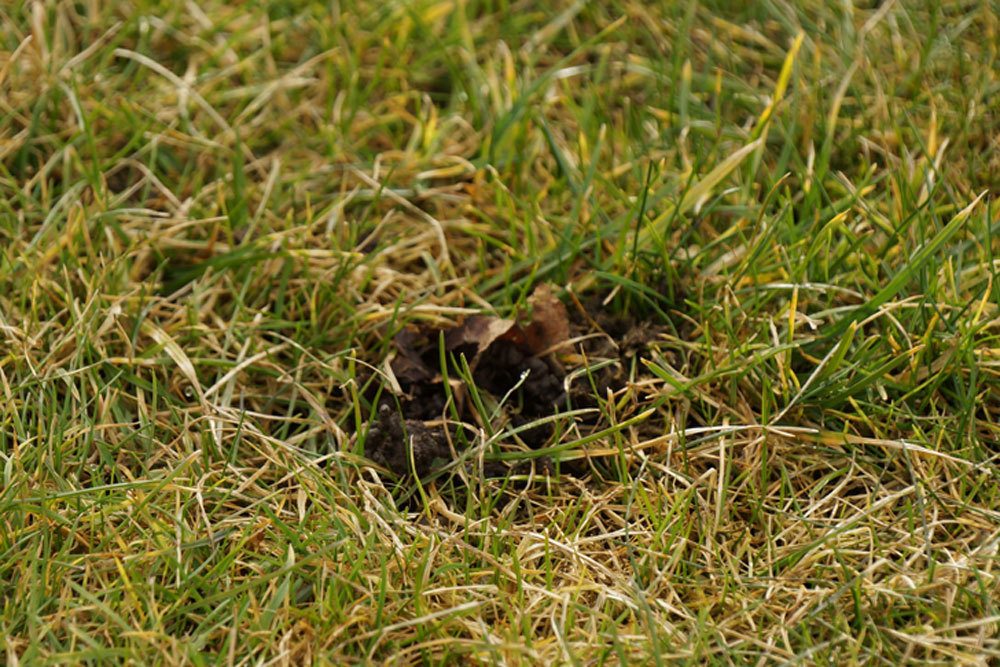A beautiful green lawn in the garden is for every hobby gardener his figurehead. Quickly, mineral fertilizer is used to help a little. But beware, lawns can sometimes be damaged if they are overfertilized.
- overfertilization possible due to mineral fertilizer
- typical signs so-called “burn marks” in the lawn
- lawn plants can dry out without help
- if overfertilized, thorough watering of the lawn will help
- good alternative use of organic fertilizer
Contents
- 1 Signs of overfertilization
- 2 Formation of burns
- 3 Causes of overfertilization
- 4 Soil analysis provides information
- 5 Long-term measures in case of overfertilization
- 6 Frequently asked questions
- 7 Why is extensive watering necessary after overfertilization?
- 8 Can the lawn be overfertilized with organic fertilizer?
- 9 Are lawn plants always overfertilized when they turn yellow and dry?
- 10 Author
Signs of overfertilization
When using mineral lawn fertilizer, overfertilization can sometimes occur quickly. The motto: “A lot helps a lot!” is completely out of place here. The consequences can then be very serious for the lawn. Too many nutrients are not good for healthy growth, but serious damage occurs. The signs can vary depending on the degree of overfertilization:
- excessive growth
- brittle, soft, swollen stalks
- dark green coloration when overfertilized with nitrogen
- initially yellowing of the culm tips
- later brown coloration
- finally discoloration of the whole plant
- extensive death of the grass plants
The discoloration of the plants is also known as “burning”. The existing damage pattern in the lawn provides information about the degree of overfertilization.
Note: In the case of overfertilization, there is a relatively high concentration of fertilizer salts in the soil. This has a negative effect on the roots of the lawn grasses. The plants become more susceptible to frost and also fungal diseases.
Formation of burns
Burns in the lawn are caused by exosmosis, practically a reversal of osmosis. Normally, the concentration of mineral substances in the plant cells is higher than in the soil. This allows the plants to absorb water from the soil accordingly, as it always moves in the direction of the higher mineral concentration. In other words the roots literally attract the water. This process is known as osmosis. If the lawn is now overfertilized, the following happens:

- Mineral concentration in the soil increased
- water leaves the plant cells
- flows back into the soil
- no water absorption of the roots possible
- grasses turn yellow and dry up
- superficial yellow-brown, bare patches visible
These spots look as if they have been burned. Due to overfertilization the grass is burnt.
Note: If the lawn is overfertilized, lawn weeds such as sorrel and dandelion can gain an unhindered foothold due to the high concentration of the various nutrients if the nitrogen concentration is excessive or if the iron content is too high. When there is an excess of lime, on the other hand, the grass is pale yellowish. It suffers from chlorosis because no iron can be absorbed.
Causes of overfertilization
The reasons why a lawn is overfertilized can vary. Most often, overfertilization occurs when a spreader is used to apply fertilizer. Often areas are fertilized twice, so some of the plants receive an excessive concentration of nutrients. The typical yellow stripes then appear in the lawn. Here it is important
- to pay attention to the ruts
- to keep some distance between them
- not to overlap lanes
- to dose fertilizer a little lower
- to lift wagons in curves
- not to choose the specified spreading level
- better to set one lower
- place fertilizer bags on paved surface
- also use spreading trolley when filling
- never exceed the dosage guideline on the packaging
- it is better to use a little less
Another possibility is that already during the filling of the cart fertilizer unintentionally lands on the lawn or the bag simply tips over. Also, incorrect adjustment of the spreader can overfertilize the greenery. in these cases, the fertilizer should be removed from the area as best as possible. Either by hand, but then do not forget gloves, or carefully rake off the turf with a rake.
Note: In the long term, the use of mineral fertilizer can lead to overfertilization with nitrogen and phosphate. At the same time, there may be an undersupply of potassium to the plants.
Soil analysis provides information
Sometimes it can also be due to the fact that the lawn is simply overfertilized because the composition of the soil and the nutrients it contains are not known. When the first signs appear, even a suspension of fertilization is of no use. The lawn plants can then suffer from an excess of certain nutrients, as well as from the deficiency of another. Further application of fertilizer would aggravate an already existing over-fertilization. therefore, a soil analysis should be carried out. Proper action cannot be taken until the exact nutrient concentration in the soil is known. To do this
- take samples at several locations
- have these analyzed in the laboratory

In addition to the soil composition, and the nutrient content, the soil analysis also gives a recommendation for further fertilization measures.
Tip: There should be a regular mulching of the lawn. To do this, simply leave the shredded lawn clippings on the surface. This contains important nutrients, which are thus supplied to the soil.
Long-term measures in case of overfertilization
After an over-abundant application of fertilizer, immediate help is necessary to avert greater damage to the lawn and still save it. Measures are:
- extensive, penetrating watering
- turn on the sprinkler for a few hours
- apply at least 15 liters of water per m² on the whole area
- mow brown and yellow areas down to ground level
- in case of acute over-fertilization, mow the entire area
- mowing depth 4 cm
- remove lawn clippings
- then scarify
Soil becomes more permeable
- then water as described
- Improvement should occur after 14 days
- otherwise apply new topsoil
- height 5 cm
- then new sowing
- roll or tread down well
- then water well
Tip: Mowing of the entire area in case of acute overfertilization is recommended, since a high concentration of nutrients is bound in the plant mass. When rotting, these are released again and enter the soil.
Frequently asked questions
Why is extensive watering necessary after overfertilization?
Watering the soil can dilute the soil solution of nutrients. As a result, osmosis can be restored. The plants can again absorb water unhindered. Excess nutrient salts are also flushed out. These are thus stored in deeper soil layers, where they cannot cause any damage to the roots.
Can the lawn be overfertilized with organic fertilizer?
No, there is no such possibility. Among other things, compost, horn shavings or grit can be used. The nitrogen contained is organically bound and must first be broken down in the soil by microorganisms and converted into nitrate. Only then is it available to the plants and the osmotic effect can develop properly. These are so-called slow-release fertilizers.
Are lawn plants always overfertilized when they turn yellow and dry?
No, there does not always have to be overfertilization. Sometimes, especially on light, sandy soils and in full sun, grass plants turn yellow and show a dry condition in summer. They then suffer from lack of water. Sandy soils dry out very quickly and can hardly store water. In the worst case, if there is no irrigation, the plants can dry up. An alternative would be to plant a special dry grass. This tolerates drought.


